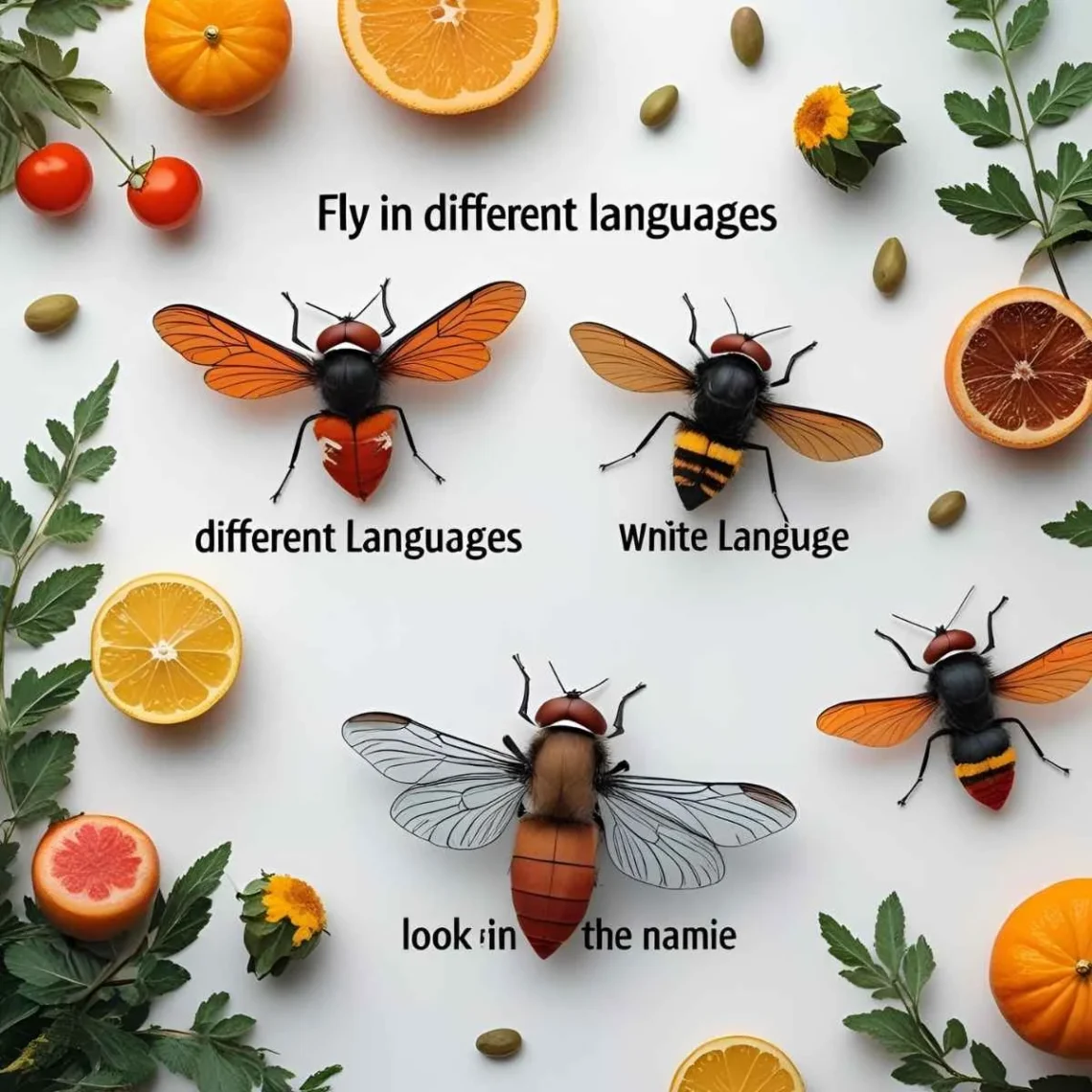Picture a child in a Rio de Janeiro park, pointing at a butterfly and shouting “voar” with wide-eyed wonder. The word for “fly,” so simple yet evocative, captures the universal dream of soaring above the earth, a concept that resonates across cultures.
Whether it’s a bird gliding over a Nairobi savanna or a kite dancing in a Beijing sky, “fly” carries a sense of freedom and possibility, shaped by each culture’s unique perspective.
Let’s embark on a linguistic adventure to explore how people worldwide express “fly” and what these words reveal about their connection to movement and liberation.
Reference Table: “Fly” in Different Languages
| Language | Word/Phrase | Cultural/Linguistic Insight |
|---|---|---|
| French | Voler | Implies both flying and stealing, showing linguistic versatility. |
| Spanish | Volar | Evokes poetic imagery of soaring, common in Latin American literature. |
| Italian | Volare | Famous from the song “Volare,” it conveys joy and freedom. |
| German | Fliegen | A straightforward term, reflecting Germany’s directness. |
| Mandarin | Fēi (飞) | A concise term, tied to imagery of birds and planes in Chinese art. |
| Hindi | Uṛanā | Suggests soaring or rising, linked to spiritual freedom in India. |
| Japanese | Tobu (飛ぶ) | Used for birds, planes, or even leaping, reflecting versatility. |
| Korean | Nal-da (날다) | Evokes graceful movement, often tied to nature in Korean culture. |
| Arabic | Tāra (طار) | Used across 20+ countries, linked to poetic imagery of flight. |
| Swahili | Ruka | Means “to soar” or “jump,” used in East African storytelling. |
| Zulu | Ndiza | Conveys flight with a sense of energy, used in South Africa. |
| Yoruba | Fò | A short, vivid term for flying, tied to Nigerian folklore. |
| Maori | Rere | Means “to flow” or “fly,” linked to nature in New Zealand. |
| Hawaiian | Lele | Evokes the grace of birds or spirits, tied to aloha. |
| Cherokee | Galvdi | Refers to flying, often tied to spiritual journeys in Native culture. |
European Languages: Soaring with Poetic Flair
European languages express “fly” with words that blend practicality and poetry. For instance, in French, “voler” captures both flying and stealing, reflecting the language’s nuanced duality. A Parisian might use it to describe a bird’s graceful flight. Meanwhile, Spanish uses “volar,” a term that evokes soaring in poetry and songs across Spain and Latin America. Additionally, Italian’s “volare,” immortalized in the song “Nel Blu Dipinto di Blu,” conveys joy and freedom, often heard in festive settings. In German, “fliegen” is direct, used for birds, planes, or even dreams of flight, aligning with Germany’s straightforward style. Thus, these terms reflect Europe’s mix of poetic imagination and practical clarity, from Italy’s lyrical flair to Germany’s precision.
Asian Languages: Flight as Harmony and Aspiration
Asia’s linguistic diversity shapes unique expressions of “fly,” often tied to nature and ambition. For example, in Mandarin, “fēi” (fly) is a concise term, frequently depicted in art with birds or mythical dragons, symbolizing freedom. In Hindi, “uṛanā” suggests soaring or rising, resonating with India’s spiritual view of flight as liberation. Similarly, Japanese uses “tobu,” a versatile word for birds, planes, or even leaping thoughts, reflecting Japan’s blend of practicality and imagination. In Korean, “nal-da” evokes graceful movement, often tied to nature’s beauty in poetry. Finally, Arabic’s “tāra,” used across over 20 countries like Egypt and Iraq, carries poetic weight, linked to tales of soaring eagles or mythical journeys. These terms highlight Asia’s range, from concise Chinese to emotive Arabic expressions.
African Languages: Flight in Stories and Spirit
In African languages, “fly” often connects to storytelling and energy. For instance, Swahili, spoken in over 20 countries like Kenya and Tanzania, uses “ruka,” meaning “to soar” or “jump,” often featured in tales of birds or spirits. In Zulu, “ndiza” conveys dynamic flight, used in South Africa to describe birds or energetic movement. Similarly, Yoruba’s “fò” in Nigeria is vivid, tied to folklore about birds carrying messages to the divine. These terms, used in communal settings like markets or ceremonies, reflect Africa’s vibrant oral traditions and spiritual connection to flight.
Indigenous & Island Languages: Flight as Connection to Nature
Indigenous and island languages express “fly” with simplicity and ties to nature. For example, Maori in New Zealand uses “rere,” meaning “to flow” or “fly,” evoking rivers and birds in harmony. In Hawaiian, “lele” suggests the grace of birds or spirits, imbued with the aloha spirit. Similarly, Cherokee’s “galvdi” refers to flight, often tied to spiritual journeys in Native American stories. In Samoan, “lele” (fly) reflects the Pacific’s communal connection to nature, used in tales of birds or voyages. Across these cultures, from New Zealand to the Cherokee Nation, “fly” emphasizes nature and spirit, often celebrated in rituals.
Cultural Insights: The Evolution of Flight’s Words
Words for “fly” have evolved with cultural views of movement. For instance, Latin’s “volare” (1st century BCE) influenced Romance languages like Italian and Spanish, tying flight to freedom. In Arabic, “tāra” traces back to poetic traditions, symbolizing transcendence. Moreover, in African languages like Swahili, “ruka” reflects trade-era stories of birds as messengers. In Asia, terms like “fēi” and “tobu” align with philosophies of harmony and aspiration, from Chinese dragons to Japanese cranes. These words carry histories of mythology, exploration, and human dreams of soaring, uniting cultures through the universal longing for flight.
Proverbs and Sayings: Wisdom of Flight
- French: “L’oiseau vole, mais le cœur reste.” (The bird flies, but the heart stays.) – Reflects freedom with roots.
- Hindi: “Uṛanā seekho, par zameen yaad rakho.” (Learn to fly, but remember the ground.) – Balances ambition and humility.
- Swahili: “Ruka kama ndege, lakini usisahau nyumbani.” (Fly like a bird, but don’t forget home.) – Ties flight to belonging.
- Japanese: “Tobu tori wa kokoro mo takaku.” (The flying bird has a soaring heart.) – Links flight to aspiration.
- Yoruba: “Fò bi ẹyẹ, ṣugbọn jẹun pẹlu awọn eniyan.” (Fly like a bird, but eat with people.) – Emphasizes community.
FAQs
Why do some words for “fly” sound similar?
Romance languages (e.g., French, Spanish) share Latin roots like “volare,” while trade and cultural exchange spread terms like Arabic’s “tāra” to Swahili.
What’s the oldest term for “fly”?
Latin’s “volare” (circa 1st century BCE) is among the earliest, influencing modern Romance languages.
How do cultures shape the term’s use?
Collectivist cultures (e.g., African, Indigenous) tie “fly” to community and nature, while individualistic cultures (e.g., European) focus on personal freedom.
Conclusion
From “volar” in Spain to “ruka” in Tanzania, the word for “fly” weaves a global thread of freedom and aspiration. Each term, whether the poetic “volare” in Italian or the spiritual “lele” in Hawaiian, reflects cultural values while celebrating our shared dream of soaring. Consequently, these words remind us that flight, in all its forms, unites humanity in a universal pursuit of possibility. How do you say “fly” in your language, and what does it inspire in you? Share your thoughts below—we’re eager to hear your story!






